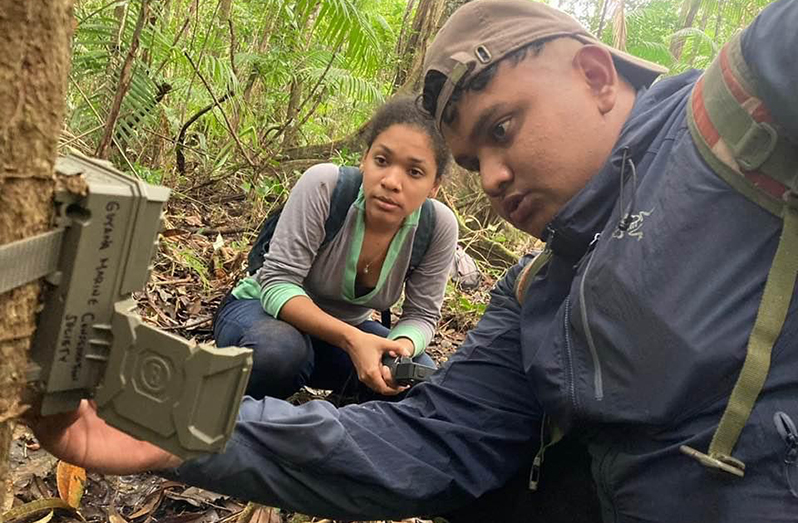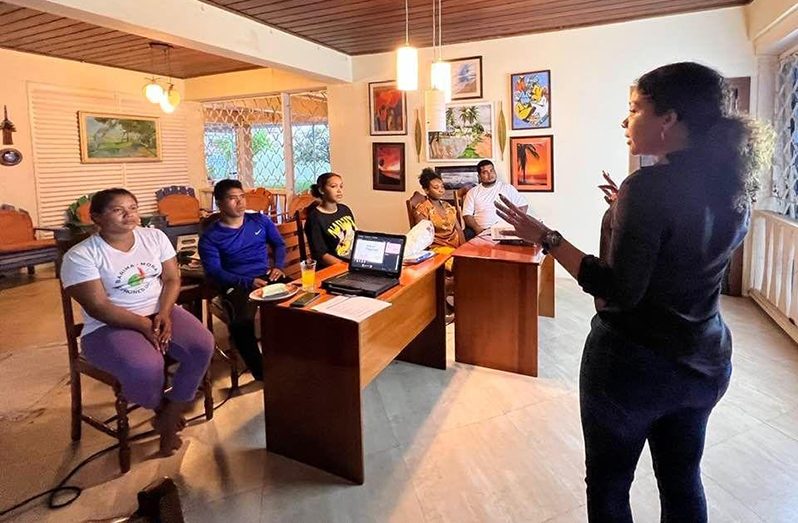NGO working to raise preservation awareness in remote areas
THE Guyana Marine Conservation Society is one of the organisations responsible for bringing awareness to the Guyanese community about preserving marine life and sea defence.
To this end, the non-governmental organisation is working on a community development project in Region One (Barima / Waini).
The Pepperpot Magazine sat down with Sarah Singh and Felicia Collins, both coordinators for the education programme, who are currently executing training in that region.
“We were able to implement most recently an education and training programme for both primary and secondary schools in the region, but with specific emphasis on primary school pupils for now in the Barima Mora area, which is the largest Mangrove area in the country,” Singh told the Pepperpot Magazine

This training for the various schools in the Barima Mora Passage area is being conducted at several schools. These schools include St Cyprian’s Primary School in Imbotero; St Peter and Paul Primary School in Morawhanna; St Peter and Paul Primary School (Annex) in Smith’s Creek; Aruka Primary School in Aruka; St Anslem’s Primary School in St Anslem; Unity Square Primary School in Unity Square; Barima Blackwater Primary School in Barima Blackwater; Hosororo Secondary School in Hosororo and Northwest Primary School in Mabaruma.
According to Singh, the awareness sessions utilise presentations, animated videos, and other fun and interactive learning methods to raise awareness of the valuable natural resources of the Barima-Mora Passage, especially the mangroves, birds, mammals, fishes, and crabs.
“The team is currently working on animating each chapter of the booklet, which would assist in making the educational sessions more fun and understandable for the kids. We are also working on educational posters which will be displayed in the schools to complement the information presented during the outreaches,” Singh related to the Pepperpot Magazine.
During her interview, Singh noted that after the outreach school sessions are done, the children are taught about aerial drones.

They are taught what they are and how they will be able to use them in the Barima Mora Passage Village.
Merging technology with education can be very fruitful and satisfying, and according to Sarah, it is very rewarding to see the smiles on the children’s faces as they are taught.
The booklet is also used to conduct wildlife club classes in four primary communities in the Barima-Mora Passage- Imbotero, Morawhanna, Smith’s Creek, and Aruka. During these classes, the children are taught about the valuable natural resources in the Barima-Mora Passage, their importance, ways we can protect them, and so many other things. They get to put their creative side to use by producing beautiful drawings and they also participate in outdoor activities such as crab-catching, bird watching and identification, and so many other activities that aid in making learning easy and fun.
Singh is a drone pilot and part of her responsibility is to train Indigenous girls in aerial drones. Then in the future, she will train on the watching drone.
“So far, I have trained girls from each of the communities to use aerial drones and establish the first-of-its-kind Girls Indigenous Drone in Guyana,” Singh noted during her interview with Pepperpot Magazine.
About the GMTCS
According to information provided by the team, the Guyana Marine Turtle Conservation Society (GMTCS) is Guyana’s oldest and only marine-focused conservation NGO. “We are a pool of committed experts from academia, government, private sector, and indigenous backgrounds. We work together passionately to support and advocate for the protection, conservation, and management of Guyana’s marine and coastal biodiversity,” the group explains.
The NGO’s journey started in the 1980s when we worked with Indigenous communities to conserve the nesting habitats of four endangered sea turtles along the shores of what is now the Shell Beach Protected Area. In 2000, the Society was formally established as a non-governmental organisation under the Friendly Societies Act. “Aware of Guyana’s growing marine and coastal conservation needs, in 2014, we expanded our mandate from its primary focus on sea-turtle conservation to other important marine species, their habitats, and wider marine and coastal ecosystems.”
Some of the NGO’s notable achievements are:
* Formal implementation of the sea-turtle conservation programme in the Shell Beach area between 2000 – 2011.
* Led the Shell Beach Protected Area process which resulted in it being declared a protected area in 2011.
* Mobilisation of donor funds to support various sustainable community livelihood activities, such as North West Organics, within and adjacent to the Shell Beach Protected Area.
* Education and awareness to local communities and the wider public on the value of marine and coastal resources, and advocacy to decision makers for the need of their preservation.
* Securing an annual no-fishing zone from the Ministry of Agriculture which reduced incidental mortality of sea turtles and increased leatherback populations.
* Construction of the Leatherback Sea turtle monument in central Georgetown.



.jpg)








